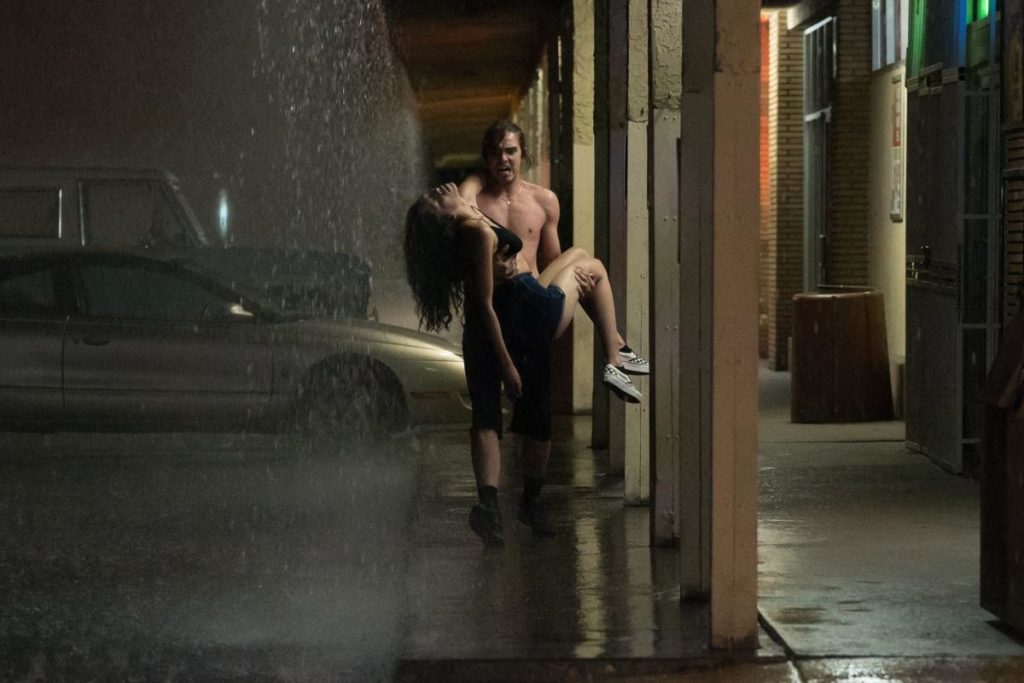Featuring the first Native American woman to star in a lead role in both Television and Movie history; excellent representation doesn’t make up for ‘Chambers’ lackluster script and meandering subplots.
For a detailed analysis featuring spoilers, TV Talk Episode 9 discusses ‘Chambers’ on TheWorkprint podcast. Available here and on iTunes and GooglePlay.
A Netflix supernatural horror series that debuted on April 26th. ‘Chambers’ is the story of Sasha (Sivan Alyra Rose), a heart transplant survivor whose life becomes seemingly possessed by the spirit of her teenage heart donor, Becky (Lilliya Scarlett Reid). Haunted by the girl’s untimely death, she seeks to discover the mysterious circumstances behind Becky’s past about how she died, but more importantly: why?
What transpires is a mystery that forays into the exploration of magic, shamanism, mysticism, energy chakras, and the occult – in just about every poorly explored magical trope you could imagine. This is surrealist horror at some of its finest. All set in the deep south of New Mexico.

The story begins with Sasha, a modern Native American teenager living a regular, lower-class life. She is tremendously talented and has a wonderful boyfriend named, TJ (Griffin Powell-Arcand) – who is also a fellow mixed Native American. She lives a difficult life being raised by her uncle, but is mostly happy, up until the night she chooses to lose her virginity.
In the process of starting this special moment, Sasha nearly dies of a heart attack while losing her virginity. Luckily, she is brought into a hospital in time, where recently deceased teen, Becky Lefevre, is able to have her heart transplanted thanks to the consent of the Lefevre family. Yet, all is very much not what it seems as Sasha is soon haunted by strange visions and minor losses of control, taking on fragmented memories and the personality traits of Becky, herself. She soon meets Becky’s parents, who are oddly enough, more than willing to financially provide this amazing life meant for their daughter, directly toward Sasha. This includes both Becky’s car and her acceptance into the town’s most elite private school.
There are a lot of intriguing themes going on for the show at the series’ beginning. Issues such as identity crises, classism, Native American representation, and fun high school experiences: all told from an underrepresented perspective (Sasha’s). Likewise, the beginning oddities and eccentricities, seem to stem more from the setting’s well-to-do white neighbors, in a fashion similar to the pandered stylings Jordan Peele – as there’s just something odd with the white community of this town. Acknowledged especially, once Sasha delves deeply into Becky’s world, and we see the odd new-age practices and luxuries of the students in her private school.
However, that’s where the series begins and somewhat ends in terms of racial and class exploration. The middle episode segments of the series are, by and large, a clustered mess. With a very incoherent story and a facile attempt in being representative of the ethnically diverse cast’s culture. Saturated in between these moments, are attempts of providing surrealist horror featuring greatly disturbing imagery, gross-out cardiovascular body horror, and mild explorations into mysterious organizations. Though it’s mostly based on assumptions and appears somewhat randomly.
There’s an obvious disconnect in this series. And without listing spoilers, let’s just say that the horror takes an improvisational style to its shock. The scares are less relevant to the story and take more of a ‘yes and’ approach to the types of horror it uses for each scenario. Allowing for any sort of scare possible, yet also, making the set-ups at times: utterly nonsensical.
Part of this has to do with the fact that by covering ‘teenage youth’ in the modern sense, the series also freely embraces substance abuse, including the use of psychedelic drugs. So we don’t fully know what’s the reality we’re experiencing here in the series. Add in various layers of reality augmented tropes such as possession, split memories, and several caricatures of psychotic people – and you have a show that’s given free rein to be creative in respects to its horror. Which is great to look at but in my opinion, actually harms the series, as there’s no context to anything. Worst of all is when it comes to confrontation, as I counted more than a dozen scenes where characters just accepted the dire circumstances or half-explained and half-explored situations. All for the sake of exposition (which there is a lot of) and introducing new horror elements.
Simply put, a lot of this show just doesn’t make sense.
Chambers features some of the worst writing I’ve seen on TV. There are times where it takes itself too seriously, and other times, where the explanations and payoffs just weren’t warranted nor earned. The series often conveniently explains and tells the audience what it wants and where it’s going – leaving little room for conflict between characters nor character motivation. Rather, it pushes a ridiculous subplot after subplot. All for the sake of a cool horror scene. Still, the cast is fantastic (Seriously, not a single bad performance) with what they’re given, and the cinematography is excellent. It’s all just a terrible script with more than your share of awful themes, pushed by a showrunner who doesn’t seem to be doing a good job at all in my opinion.
Final Score: 4/10
You can watch ‘Chambers’ on Netflix right now
